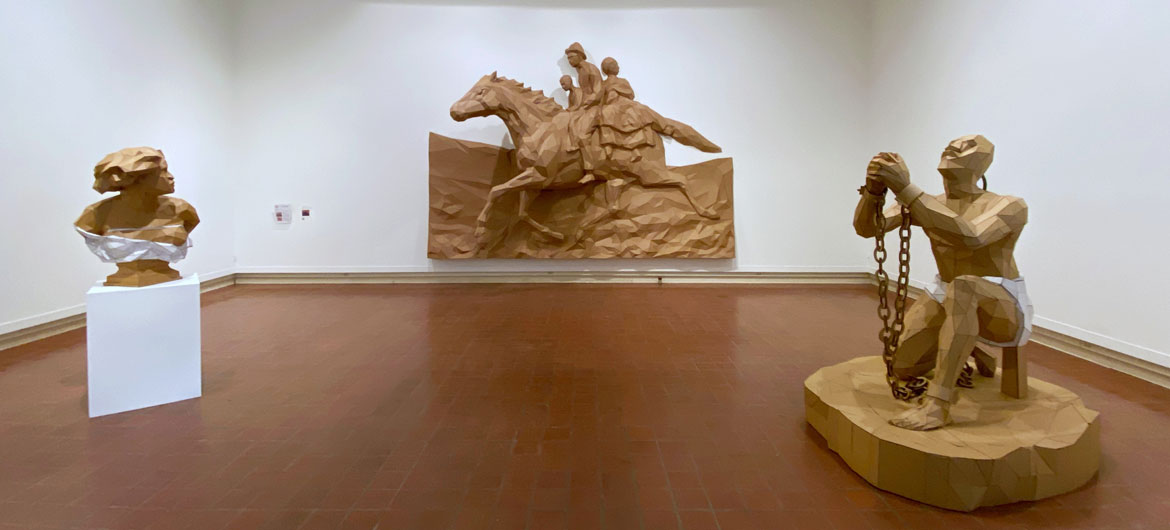Brooklyn artist Roberto Visani reimagines famous abolitionist artworks in his exhibition “Form/Reform” at the Brattleboro Museum & Art Center in Vermont from March 12 to June 12, 2022.
The exhibition features his “cardboard slave kits,” build-it-yourself cardboard kits that recreate icons of movements in the 18th and 19th centuries to liberate people from slavery in the United States and British territories, as well as 20th century anti-colonial movements.
“By making a kit, I am inviting people to confront the legacy of slavery in a different way than simply being consumers of its history,” Visani said in an August 2021 for British Art Studies. “I want to democratize that experience, so it’s not just about the history of the enslaved and enslaver, or the artist and the collector, but also about everyone in between.”
The original artworks have a complex legacy. They began their lives as powerful and pursuasive statements in the movements to free enslaved Americans, but subsequently they have often been criticized as patronizing, embodying the racism that even White abolitionists harbored, and perpetuating derogatory images of Black people as enslaved.
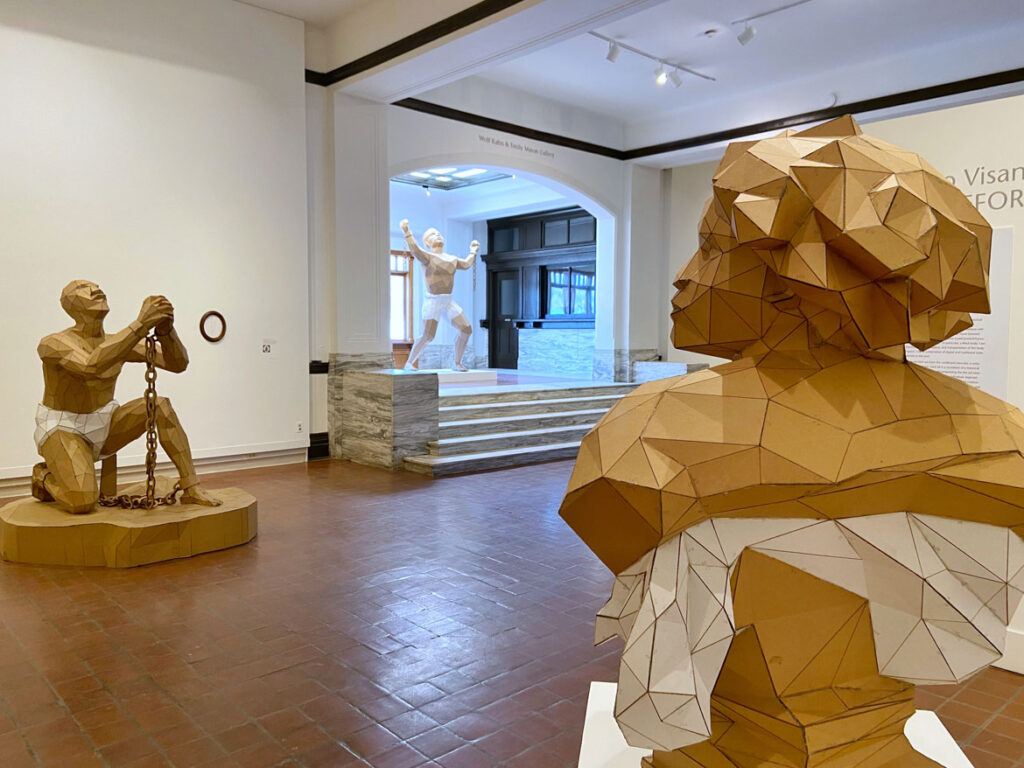
If this is the kind of coverage of arts, cultures and activisms you appreciate, please support Wonderland by contributing to Wonderland on Patreon. And sign up for our free, occasional newsletter so that you don’t miss any of our reporting. (All content ©Greg Cook 2022 or the respective creators.)
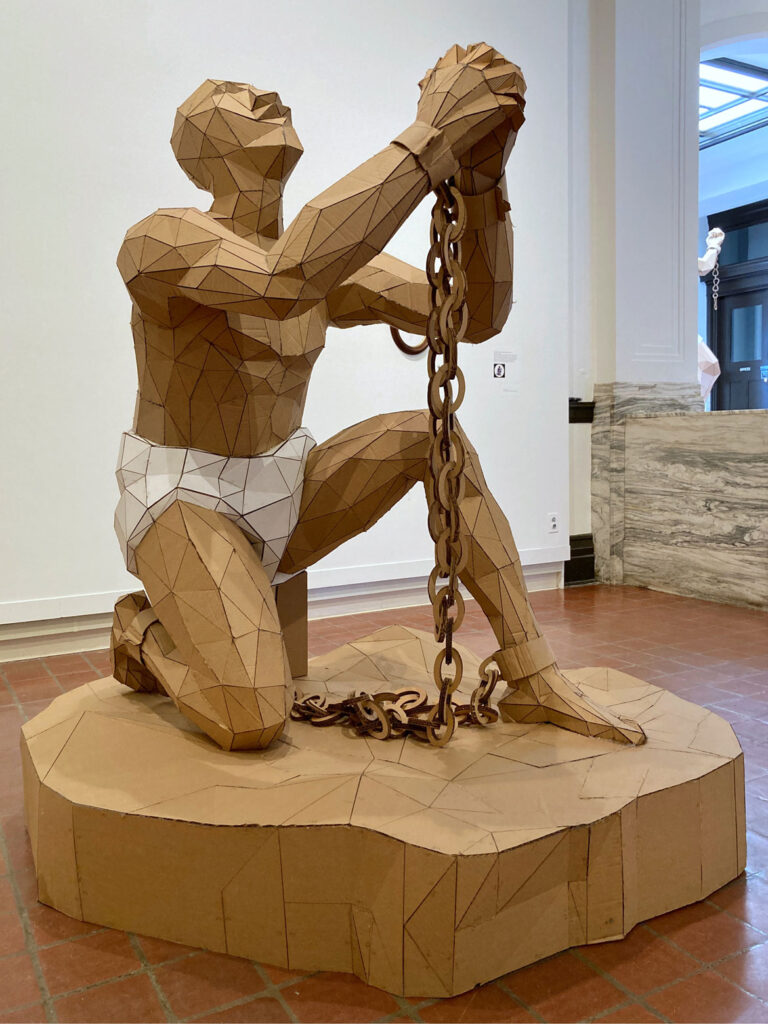

Inspired by Josiah Wedgwood’s 1787 medallion, an icon of the British and later American abolitionist movements, which depicts a kneeling enslaved man, his hands and feet chained, with the famous motto: “Am I Not a Man and a Brother?”
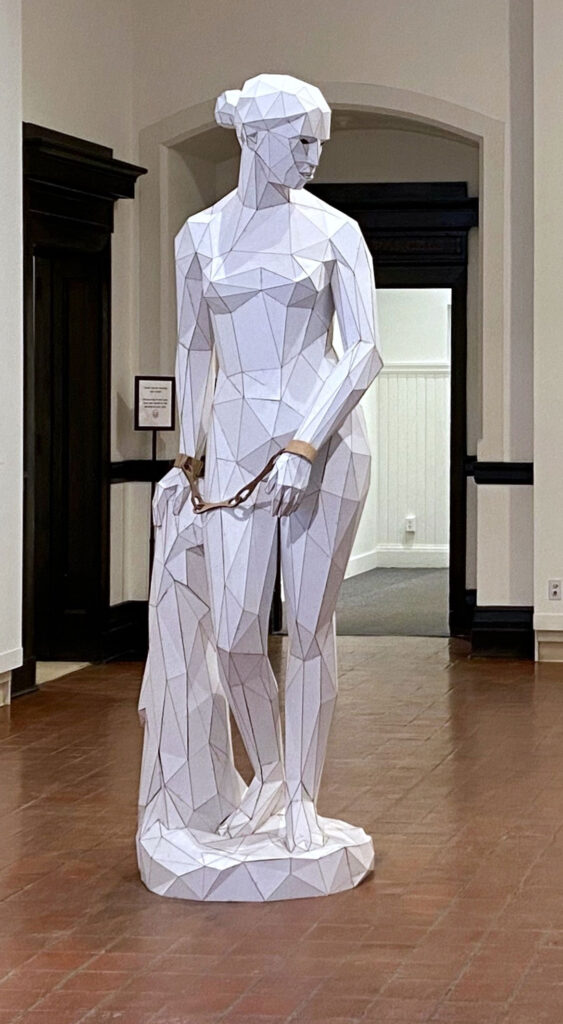
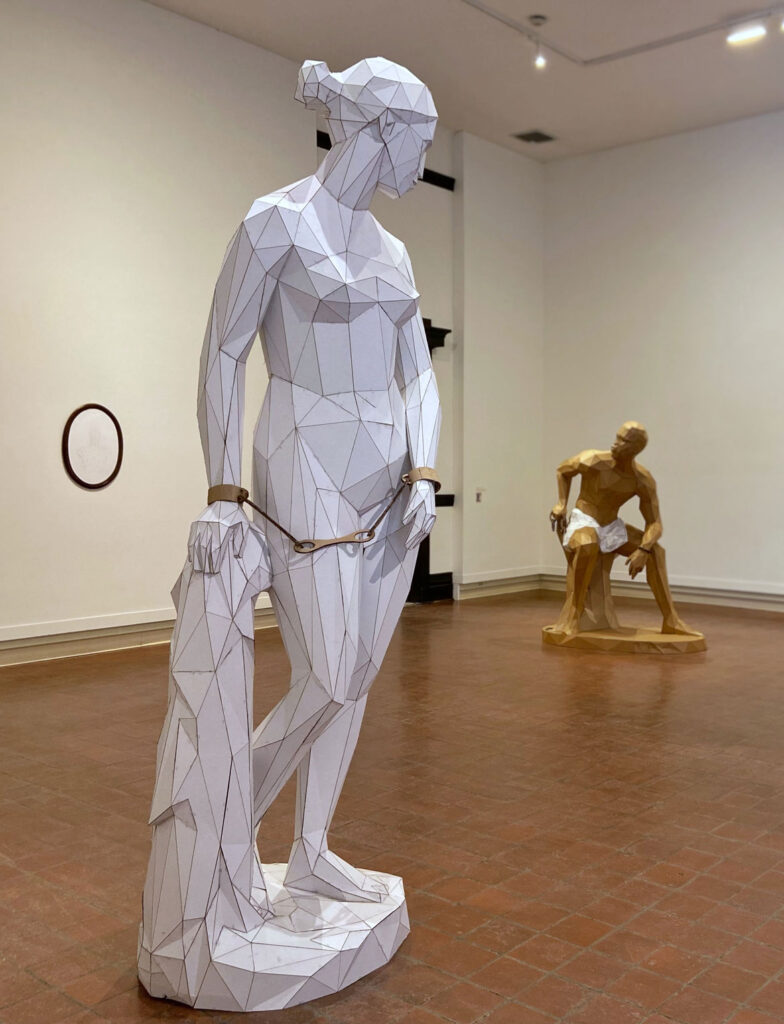
Based on Hiram Powers’s 1846 marble “The Greek Slave” depicting an apparently White Greek woman, nude and handcuffed.

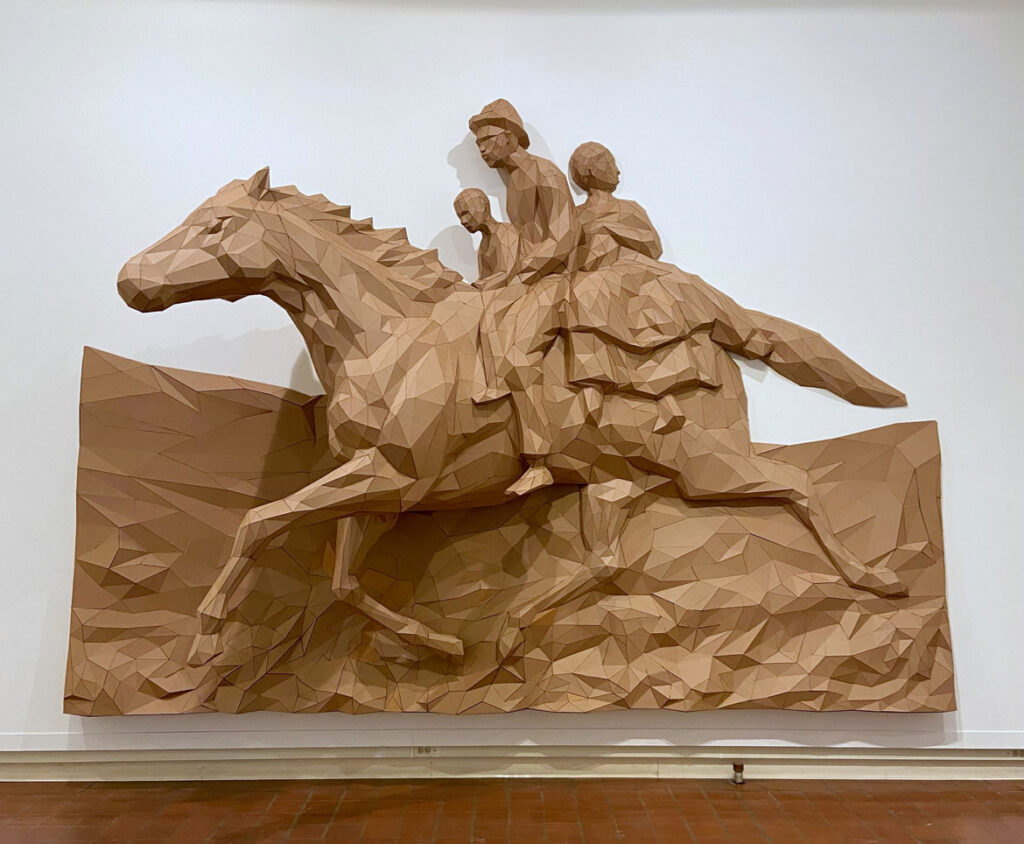
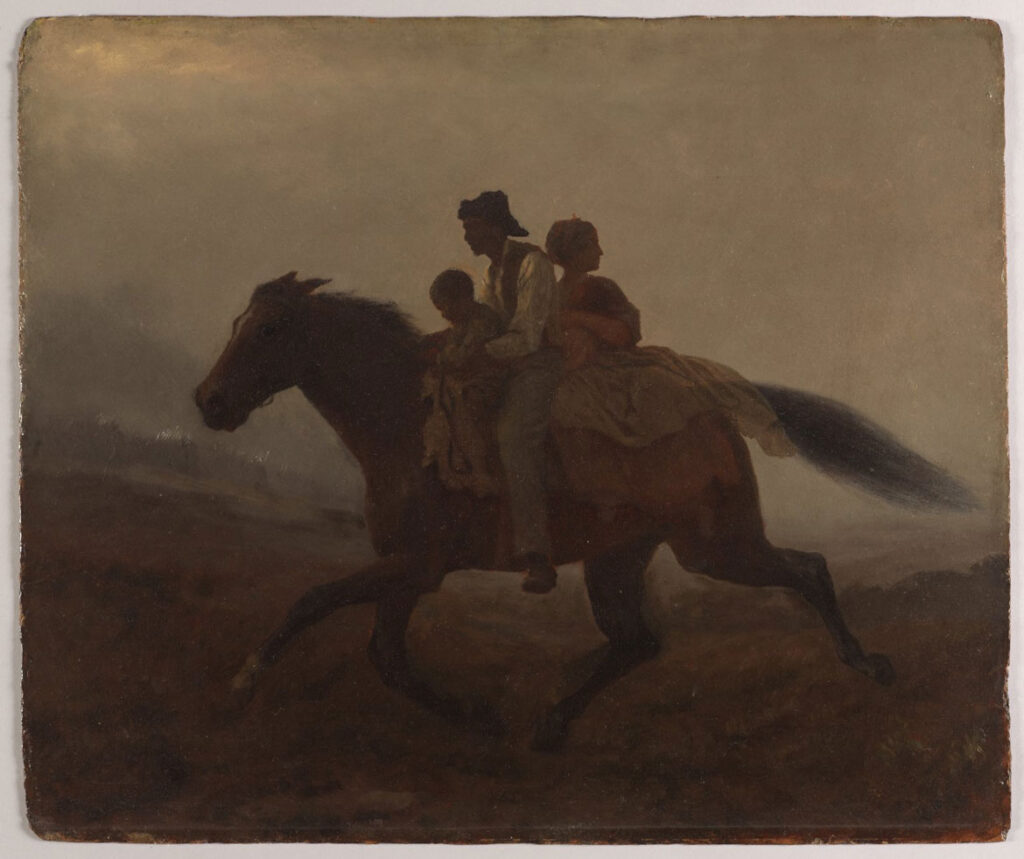
Inspired by Eastman Johnson’s 1862 painting “A Ride for Liberty—The Fugitive Slaves,” which depicts an enslaved family depicting an enslaved family on horseback fleeing to the American lines during the U.S. Civil War. “Johnson claimed to have based the painting on an actual event he witnessed near the Manassas, Virginia, battlefield on March 2, 1862, just days before the Confederate stronghold was ceded to Union forces,” writes the Brooklyn Museum, which owns the original painting.
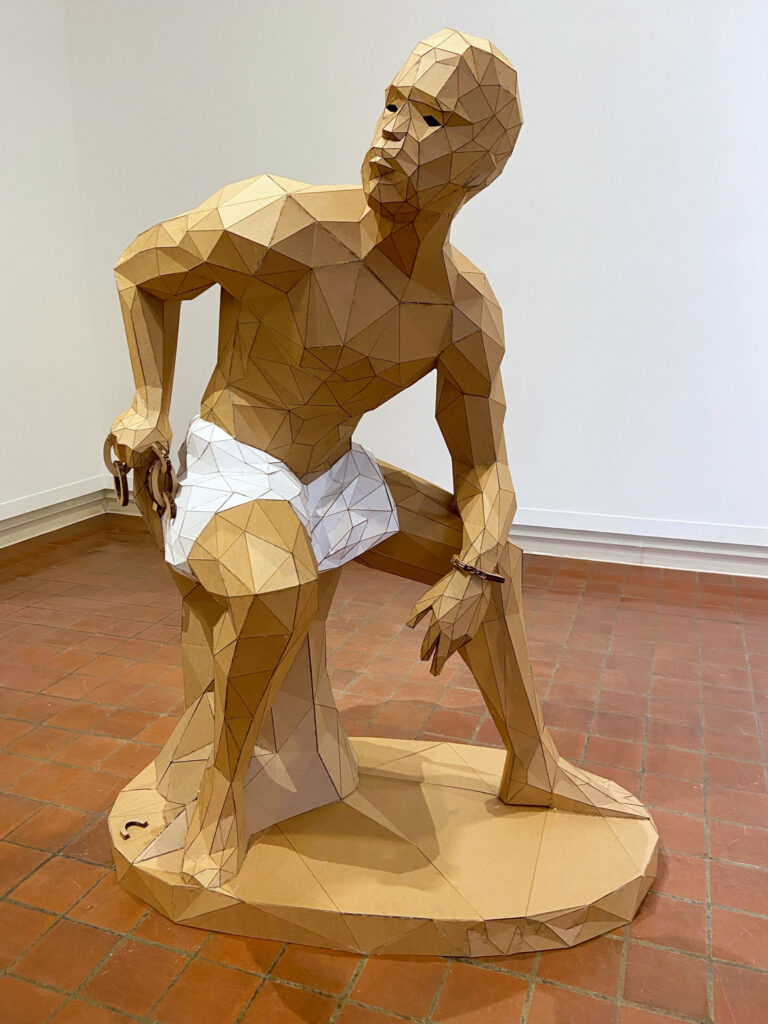
Inspired by John Quincy Adams Ward’s 1863 statue “The Freedman,” a response to President Abraham Lincoln’s 1862 Emancipation Proclamation, depicts a Black man in just a loincloth whose handcuffs have been broken.
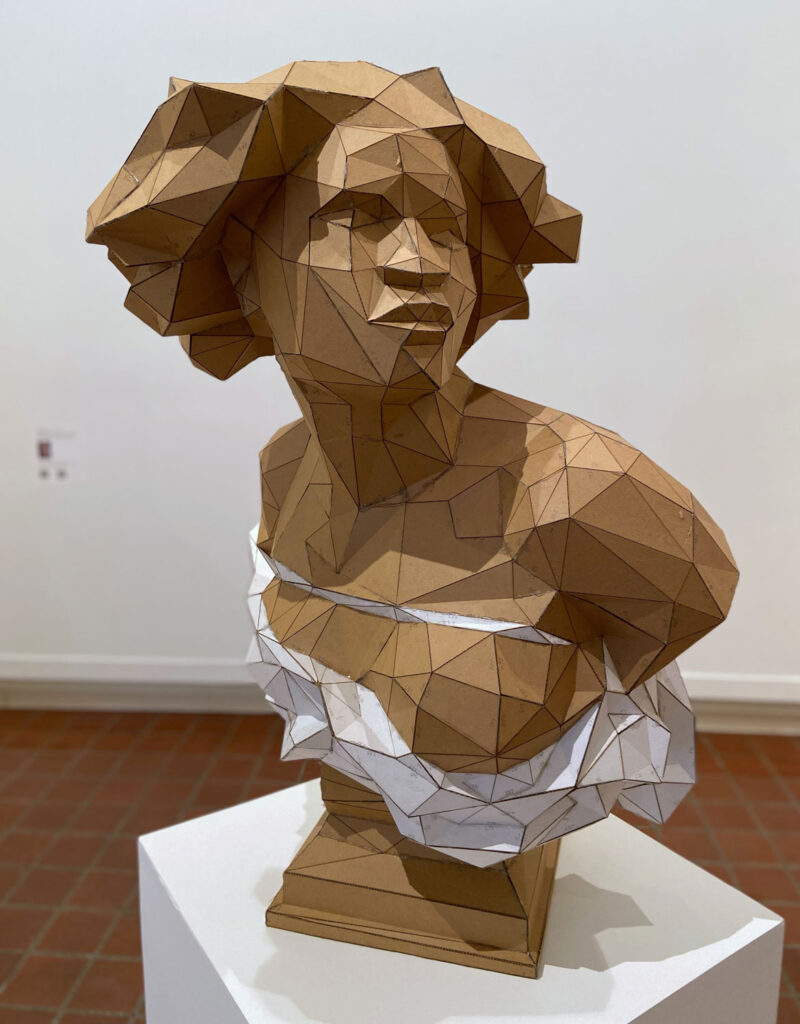
Based on Jean-Baptiste Carpeaux’s 1873 statue “Why Born Enslaved!,” which he first modeled in 1868. It’s a bust of a Black woman, bound by ropes, with her breasts falling out of her dress.
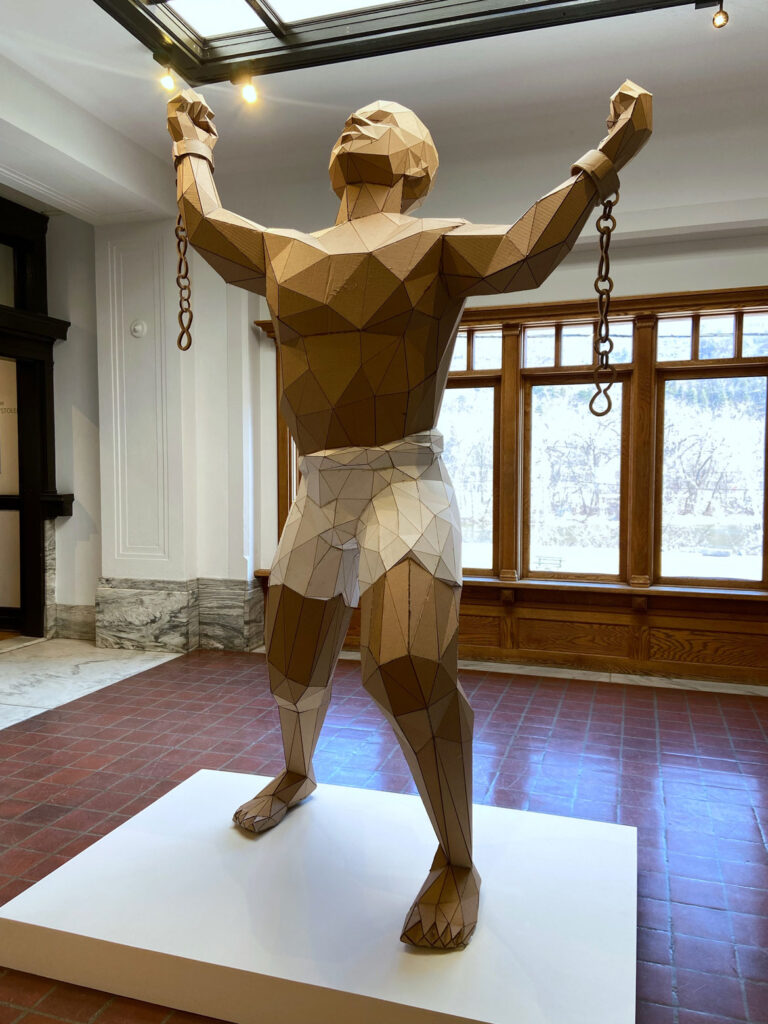
Inspired by Karl Broodhagen’s 1985 “Emancipation Statue” in Barbados, which evokes the leader of an 1816 slave revolt as well as the island nation’s independence from Great Britain in 1966.
